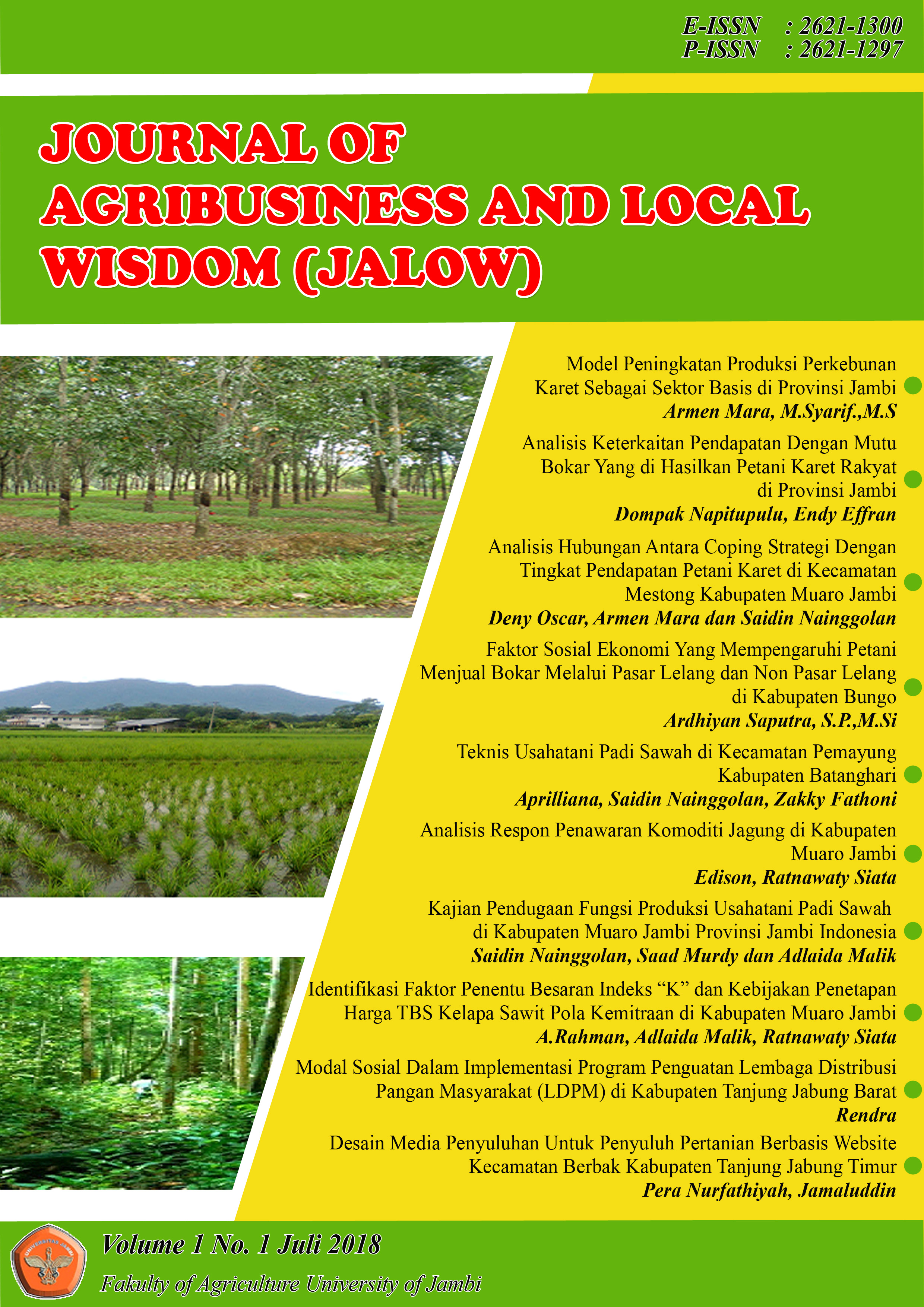ANALISIS RESPON PENAWARAN KOMODITI KEDELAI DI KABUPATEN TANJAB TIMUR
DOI:
https://doi.org/10.22437/jalow.v3i1.9787Abstract
This study aims (1) to assess the factors of production and their effects on soybean production, and to investigate the ability of input levels, such as area and others to explain the response of production; and (2). assess the response of farmer supply to input prices, receipt of gross expectations, from related variables, and other exogenous variables.
This research was conducted in 2017 in East Tanjab Regency. The method of analysis in its application is sorted based on the research objectives namely the Empirical Model of the Response Response Function. From the research, the results obtained from the soybean supply response model are strongly influenced by many factors. Among internal and external factors such as soybean prices, use of inputs, and seasons, which are quite relevant where soybean production increases because soybean prices increase. It also added that soybean production decreases when the input variables used are not in accordance with the provisions. As expected it was also found that the harvested area was also a significant determinant of crops. Furthermore it was found that soybean production increased during the rainy season. This finding is consistent with the fact that water availability is an important factor for soybean plants. The analysis also explained that soybean farmers in tidal land in the study area responded to the change in the use of efficient inputs. Supply of output is a response to soybean production. On input requests, many are sensitive to the use of labor, maintenance / harvesting labor. The elasticity of production obtained complements the part of the data base needed to evaluate the policy implications of using alternative inputs from soybean supply and input demand.
Keywords: soybean, production, function












